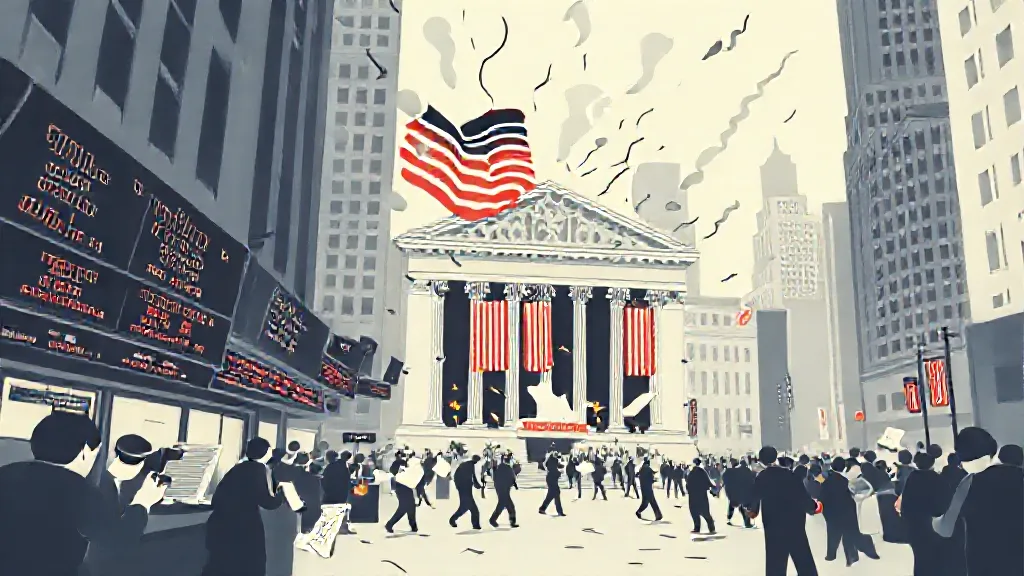The stock market crash of 1929 remains one of the most significant events in American financial history, marking the beginning of the Great Depression. This catastrophic event was not an isolated occurrence but rather the result of a complex interplay of various economic, social, and political factors that had been building up throughout the 1920s. Understanding these causes is crucial for grasping the broader implications of the crash on both the American and global economies.
Economic Speculation and Overvaluation
During the 1920s, the United States experienced a period of unprecedented economic growth, often referred to as the "Roaring Twenties." This era was characterized by technological advancements, increased consumer spending, and a booming stock market. However, this rapid growth led to rampant speculation, where investors began buying stocks not based on the companies' actual value but rather on the expectation that prices would continue to rise.
As stock prices soared, many individuals, including those who had little understanding of the market, began investing, often using borrowed money. This created an unsustainable bubble that was bound to burst.
The Role of Margin Buying
A significant factor contributing to the stock market crash was the widespread practice of margin buying.
Investors could purchase stocks by paying only a fraction of the stock's price and borrowing the rest from brokers. This practice amplified the potential for profit but also increased the risk of catastrophic losses. When stock prices began to fall, many investors were unable to meet margin calls, leading to massive sell-offs that further drove down prices.
The inability to maintain these leveraged positions created a cascading effect that contributed to the market's collapse.
Economic Disparities and Consumer Debt
While the stock market was booming, the wealth generated during the 1920s was not evenly distributed. A significant portion of the population remained in poverty, and many consumers were heavily in debt due to the easy credit available at the time.
This disparity meant that while the stock market flourished, the underlying economy was not as healthy as it seemed. When the market began to decline, consumer spending decreased, which in turn affected businesses and led to further economic contraction.
International Factors and Global Trade
The global economic landscape also played a crucial role in the 1929 crash.
After World War I, many European countries were struggling to recover economically, and the United States had become a significant creditor nation. The imposition of tariffs, such as the Smoot-Hawley Tariff in 1930, exacerbated international tensions and reduced global trade. As countries struggled to maintain economic stability, the interconnectedness of global markets meant that a downturn in the U.
S. economy would have far-reaching consequences, contributing to the worldwide Great Depression.
Psychological Factors and Market Sentiment
The psychology of investors also played a pivotal role in the stock market crash.
As stock prices began to decline, panic set in among investors, leading to a loss of confidence in the market. This fear prompted a rush to sell stocks, further driving prices down. The media coverage of the crash intensified this panic, as reports of financial ruin and unemployment spread rapidly.
The collective psychology of fear and uncertainty created a self-fulfilling prophecy that accelerated the market's decline.
Government Policies and Regulatory Failures
In the lead-up to the crash, government policies and regulatory failures also contributed to the market's instability. The Federal Reserve's monetary policy during the 1920s, which included low-interest rates, encouraged excessive borrowing and speculation.
Additionally, there was a lack of regulatory oversight in the stock market, allowing for fraudulent practices and manipulation to go unchecked. The absence of a safety net for investors meant that when the market crashed, the repercussions were devastating.
The Aftermath and Lessons Learned
The aftermath of the 1929 stock market crash was catastrophic, leading to widespread bank failures, massive unemployment, and the onset of the Great Depression.
The event highlighted the need for regulatory reforms in the financial sector, leading to the establishment of the Securities and Exchange Commission (SEC) and the implementation of stricter regulations to protect investors. The lessons learned from the crash have shaped modern financial practices and policies, emphasizing the importance of market stability and investor education.
Conclusion: A Cautionary Tale
The stock market crash of 1929 serves as a cautionary tale about the dangers of speculation, excessive debt, and the importance of sound economic policies.
Understanding the multifaceted causes of the crash not only provides insight into this pivotal moment in history but also offers valuable lessons for contemporary investors and policymakers. As we navigate the complexities of today’s financial markets, the events of 1929 remind us of the potential consequences of unchecked speculation and the critical need for vigilance in economic oversight.
